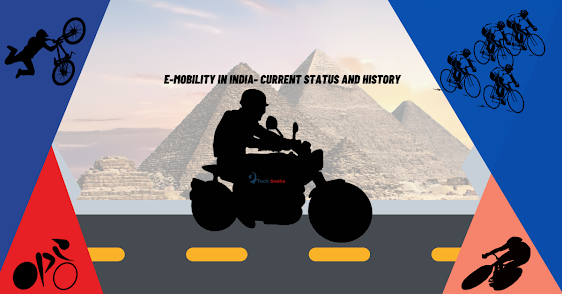E-Mobility in India- Current status and History
E-mobility in India is a new concept for many. Though the urban populace is aware of the term, the rural people and those who are living far away from metros have not heard of the term yet. The craze of electric bikes, electric scooters, e-cars, and e-vans is increasing day by day as they have become a common choice for millennial and elderly folks. The Govt. of India is also giving many benefits to the buyers and manufacturers to boost mass adoption of electric vehicles in the country, citing a strong commitment to the fight against climate change.
History and current situation of E-Mobility in India
The term e-mobility or electric mobility is not new to the scientific world. In fact, many of you have either tried to make an electric toy bike/car in your childhood or given the idea to your classmate. Evolution got us through to this new craze indeed. Almost all scientific inventions in the automobile sector have once thought of going electric with their inventions. But, it was the time of the IT revolution, which saw many inventions related to electric mobility on roads. The previous inventions were only introduced on railways, not roads.
1996
In our country, the age of E-Mobility began in the year 1996. VIKRAM SAFA was the first three-wheeled E-scooter produced by Scooter India Pvt. ltd. in Lucknow. VIKRAM SAFA was powered by a 72-volt lead battery. At that time, the firm only produced 400 of these scooters, which were successfully sold.
1999
In 1999, Mahindra introduced their first three-wheeler. In 2001, it was made available for customers to purchase. Due to a lack of demand for this vehicle, the firm ceased manufacturing in 2004; however, Mahindra Pvt. Ltd formed a different company called Bijlee to make this vehicle.
2001
In 2001, BHEL introduced the world's first 18-seater electric bus, which was powered by a 96-volt lead-acid battery. In the same year, the company launched 200 more of these buses.
In 2001, Bajaj introduced a three-wheeled electric scooter. MNES provided financial assistance for this scooter. However, this car was not formally released for commercial sale.
Bengaluru-based REVA struck cooperation with American manufacturer "Amerigon" to build their first electric car in 2001. Over the course of time, about 3200 automobiles were sold all over the world. Only 1500 units were sold in India.
2007
The era of the two-wheeler E-vehicle started in 2007. Hero motors collaborated with the UK Based company named ULTRA motors to launch its series of Electric bikes and Electric scooters in India. Other companies like Maruti Suzuki, TATA motors, HERO, etc., have also established many E-scooters and E-bikes in the same year.
2007-present
In the year 2007, the phase of the real two-wheeler E-vehicle revolution began in India. Hero Motors teamed up with Ultra Motors of the United Kingdom to bring a few electric bike and scooter models to India. Other firms, including Maruti Suzuki, TATA Motors, and HERO, have also entered the EV industry to demonstrate their capabilities and offerings.
Here you are in the year 2022 and things have dramatically changed in the country. You can now find an electric bike or electric scooter dealership in every part of the country. Big brands are, no doubt, making a huge push to the EV sector but you can’t miss the thrilling EV variants manufactured by emerging startups like Ather, Ampere, Bounce, Amo, Ola, etc.
Experts believe that the EV craze will only intensify as technology and innovation are ramping up to make up the demand and make EVs compatible with the digital environment. They also believe that the EV revolution in India will be a massive one that will catapult the country’s economy and create millions of jobs in the industry.
 Reviewed by Tech Sneha
on
March 28, 2022
Rating:
Reviewed by Tech Sneha
on
March 28, 2022
Rating:




No comments: